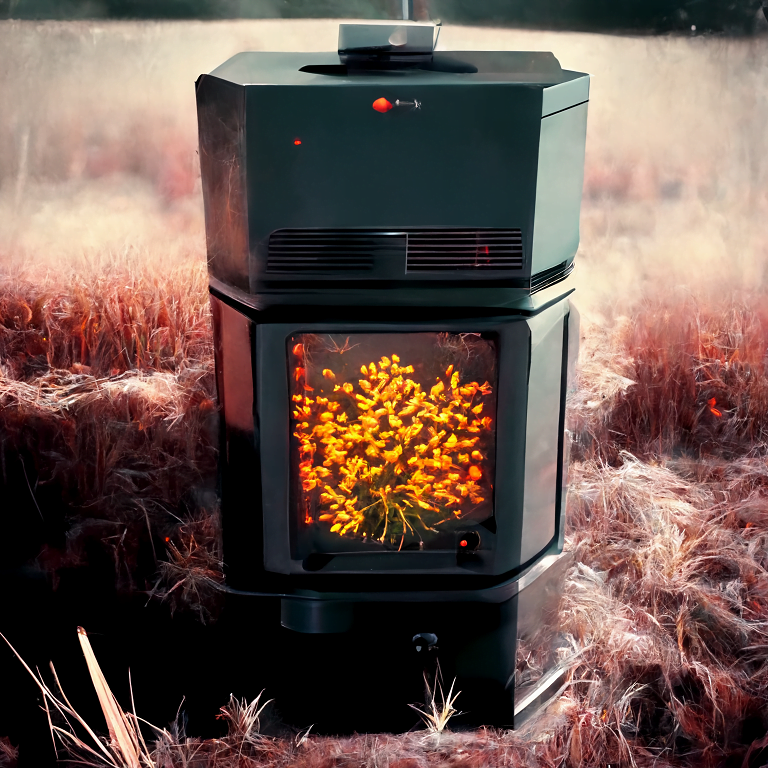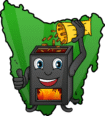I love pellet heaters but even I know you can’t run them all year non-stop anywhere in Australia. They are great for the cold, winter months but what do you do with your pellet heater during the summer? You may get a cool or cold day here and there but depending on where you live there may be several months where you don’t light your heater. It’s important to take care of your pellet heater during this time to protect it and ensure it’s ready for use when you need it again. To prepare and protect my pellet heater for summer I recommend: deep cleaning, unplugging, and making sure your pellets are stored properly during the non-winter months.

Deep Clean
When the warmer months arrive, take advantage of the warm days and give your pellet heater a deep clean. Deep cleaning your heater is crucial to keeping it running efficiently and will help extend the life of your pellet heater. For me, it can sometimes be a bit of a chore but doing it in summer means I can take my time and clean everything as thoroughly as I can. You don’t have to get it all done in one day. Take your time and make sure you clean your heater properly, as not properly cleaning a pellet heater is the main reason they fail. This will ensure it’s in good condition and ready for use when you need it.
I have another article that goes into much more details about how to deep clean a pellet heater, but this is what I recommend doing. Start with the glass door. Use a soft cloth and some glass cleaner to wipe down the glass and remove any soot and ash. Next, vacuum out the burn box to remove any loose ash or debris. Then, empty the ash pan and burn pot. Next is the hard bit, cleaning inside the pellet heater. Remove the sides of your pellet heater and clean every access port. You also need to remove and clean the exhaust fan. Finally, give the flue a thorough clean with a chimney brush. You’ll be surprised at the ash buildup.
Power Down
Since you won’t be using your pellet heater for at least a few months, powering it down is another important step in preparing it for the summer months. When your pellet heater isn’t in use, there’s no need to leave it plugged in, drawing power. There’s a good chance, depending on model, they draw no power even when still plugged in but switched off, however, turning off your pellet heater and unplugging it will help protect it from power spikes and surges, especially if you’re not using a surge protector. If you have a pellet heater UPS, then leave the UPS plugged in as this will keep the battery topped up. However, unplug your pellet heater from the UPS.
To power down your pellet heater, first turn it off, following the manufacturer’s instructions. There’ll probably be a simple on/off switch on the control panel or back of the heater where the power cord plugs connects to the heater. Once it’s off, unplug your pellet heater from the wall. You don’t have to do this if you don’t want, but I’ve gotten into the habit of unplugging many electrical devices in my house when they are not in use. Things like microwaves, toasters and hot water jugs, so I also unplug my pellet heater. When you’re ready to use your heater again, simply plug it back in and turn it on. It will be ready to use quickly and easily.
Burn Box Rust
During the summer months, when the humidity levels are usually at their highest, it’s not uncommon for a little surface level rust to form in the burn box of a pellet heater. However, this is surface level, purely cosmetic and is caused by the metal reacting with the air. No actual long term damage is caused by this. However, first-time pellet heater owners may be alarmed by the sight of rust, and often think that something has gone terrible wrong over summer when they haven’t been using their pellet heater.
Come winter, if you go to fire up your pellet heater and notice a little rust has formed on the walls of the burn box, the easiest and quickest way to remove it is to fire up your heater. The heat created by the fire will burn this surface level rust off and clean out the burn box. After the first winter firing, the rust will be completely gone and if you inspect the walls there won’t be any kind of long term, permanent damage. Again, it’s purely surface level and cosmetic.
If you want to try and prevent this from forming, then the best thing to do is get something like damp rid. Sit a damp rid pack inside the burn box, maybe just on top of the burn pot. These absorb moisture in the air and will help prevent rust forming in the burn box. However, please do not forget you have a pack of damp rid in your pellet heater and be sure to remove it before you fire up your pellet heater when winter comes.
I use this little trick and it completely solves any rust problem. But, again, this isn’t “real” rust, it is surface level and caused by high levels of humidity during summer. Pellet heaters are very reliable and even if you don’t use damp rid the first winter burn will completely remove the rust.
Wood Pellet Storage
Depending on who you ask, some people will also say you should remove any pellets from your hopper and store them away while not in use during summer. If you do a deep clean, you should should have cleaned out the hopper anyway. However, you may have simply tipped the pellets back in. I personally don’t see anything wrong with this, as pellet heaters are indoors and out of the elements. However, what you may want to be careful of is your bags of wood pellets and making sure your wood pellets are stored properly until the next winter.
Make sure your bags of wood pellets are properly stacked away, either under the house, in a room or in a shed out of the elements. If in a shed be aware that mice or other vermin may take a liking to the plastic bags and pellets, so keep them protected from mice if possible. Wood pellets can be kept in storage for up to 2 years, and since wood pellets in Australia are expensive to buy outside of Tasmania, I recommend you only buy enough pellets to get you through one or two winters. Storing anymore may mean the pellets degrade and they’ll be no good by the time you get around to burning them, wasting pellets and money.
Pellet Heater Summer Service Discounts
If you don’t want to or would prefer to have your pellet heater serviced, then doing it in summer is good because obviously you won’t need to use the heater but some retailers also offer discounts on summer servicing. They do this because during summer business is slower, so they run specials to get business during the quieter months. Pellet Fires in Tasmania frequently offers discounts on summer servicing and if you are able to take your pellet heater into one of their stores, they can do in-store servicing at very reasonable rates.
Summary of How to Prepare Your Pellet Heater for the Summer Months
Like most pellet heaters Australia, there will probably be many months of the year where you won’t need to use your pellet heater. Instead of just letting it sit, take the opportunity offered by the warmer months to get it prepared. Unplugging your heater will stop it drawing power (costing money) and protect it from power spikes. Deep cleaning it ensures it will burn efficiently in winter and extend the life of your heater. By incorporating these steps into your routine, you’ll be able to keep your pellet heater in good working order for years to come. When winter hit you’ll be ready to go with a pellet heater that’s ready to run smoothly and efficiently keeping you warm.
Resources
Preparing your pellet stove for the summer hiatus
